
table of contents
- Defense measures against flying ants in the house
- Use fragrances
- Common home remedies
- Sticky tools
- Put up insect lights
- Destroying nests
- Nematodes
- Unsuitable home remedies
- Prevention as the best defense measure
- frequently asked Questions
Soon it will be that time again: Thousands of ants spread their wings and soar into the air. The flying ants are particularly annoying in the house. These defenses help fight flying ants.
In a nutshell
- all species grow wings
- Ant flight between May and August
- never use fungicides
- not every known home remedy is effective
- it is best to combine several methods with one another
Defense measures against flying ants in the house
Use fragrances
Like many insects, ants are sensitive to odors. While the sweet scent attracts the small animals, intense aromas put them off. The source of the scent is best located directly on the ant's nest. But even those who distribute fragrances in the apartment will chase away the uninvited guests. It is particularly suitable lavender
to control flying ants. It is easiest to cut fresh shoots from the garden, provided the lavender variety is suitable. The newer species give off a very pleasant scent that humans find very harmonious, but do not have a deterrent effect on ants. Crested and Speiklavendel are known for their strong aroma that unfolds especially after the branches have dried.
Note: It is best to keep the dried twigs in a small bag, as the flowers crumble heavily in this state.
Lavender also helps prevent the animals from entering the house when the gardener plants it on the house wall or in front of the patio door. The purple flowers even serve their purpose as a houseplant on the windowsill.
If you don't have lavender in your garden, you can use scented candles or scented oils. However, caution is advised with the latter variant. Some products leave stains on curtains, pillows and wooden furniture.
Note: Finally sleep peacefully again! This works not only because the annoying ants are finally gone, but also because the scent of lavender helps many people to fall asleep and has a calming effect.
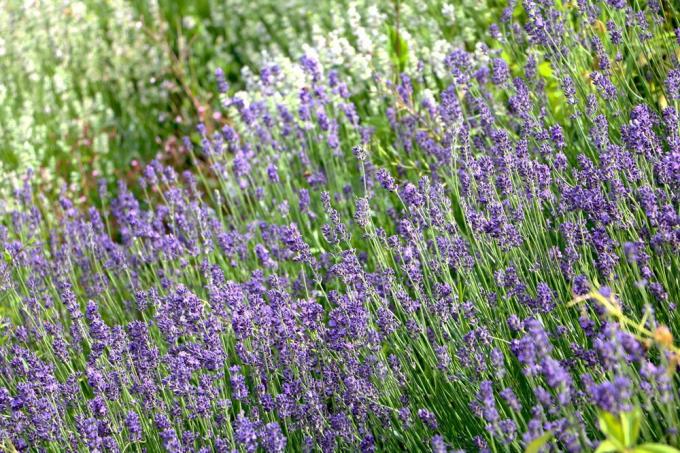
Common home remedies
Of course, the good old remedies that are available in every household also come into play against flying ants.
Note: Sometimes an ant trail runs through the middle of a flower pot on the windowsill. In this case, those affected should rather avoid acid of any kind in order not to damage the roots of the indoor plants.
Another home remedy that can put sufferers on the ant trail is vinegar. Due to the pungent smell, this is only suitable for use in the house in extreme emergencies.
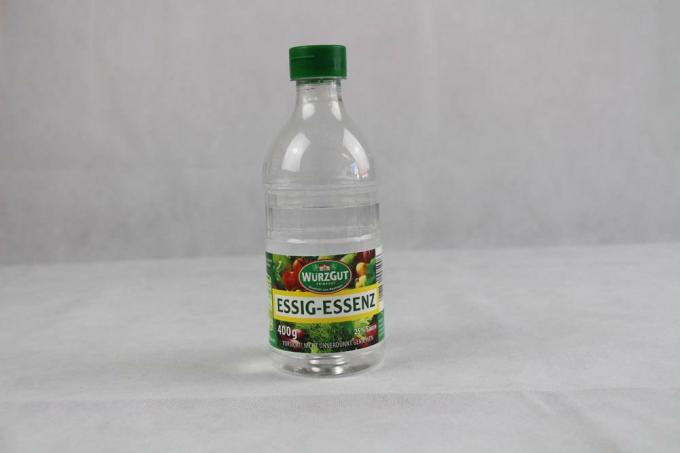
Sticky tools
If there are ant trails in every corner of the house, it doesn't take long for the insects to take to the skies. Those who can be patient until the time of the wedding flight hang up sticky traps in advance. Those affected preferably attach these directly above the nest. This is easily found by the gardener tracing the ant route back to its origin. It represents a connection from the nest to the food source.
Yellow plates, which are often used when there is a sciarid gnat infestation, are rather irrelevant. Flying ants are not attracted by colors, but react to smells. Affected people can also take advantage of this behavior by setting up traps. If you set up beer or sticky, sweet liquids such as honey or syrup, you will attract the insects in a targeted manner and can thus kill or catch them more easily in one fell swoop. Whether adhesive strips (available in hardware stores or drugstores) or self-made ant trap, with both variants the flying ants stick to the agent.

Once you have located the nest, you can use a third method to control flying ants. When the animals swarm out, those affected simply spray hairspray into the swarm. The agent sticks the wings and has an effect similar to the methods mentioned.
Put up insect lights
The trade offers a whole range of means to control flying ants. Unfortunately, most of these are baits or chemical fungicides. On the other hand, insect lights, whose UV light attracts the flying ants, are environmentally friendly. Similar to an adhesive strip, the animals stick in here.
Destroying nests
In the event of a pest infestation, those affected should always fight the source of the cause. In this case it is the ant nest. Even if this is outside the house, the source of the ants' plague must be destroyed. To do this, the gardener dissolves yeast in water and pours the liquid directly over the nest.
Nematodes
Last but not least, those affected can also hand over the work to beneficial insects. Nematodes are roundworms that attack the brood of flying ants. As described above, it destroys the origin of the population. Adult animals die sooner or later. It is crucial, however, that no new generation follows. The beneficial insects are available as a powder in small sachets in specialist shops or on the Internet. Before use, the user has to dissolve them in water and then sprinkle them over the nest. They are among the most environmentally friendly defensive measures there is. However, since these are also living beings, the user must ensure appropriate conditions in which the roundworms feel comfortable. Here are a few tips for using it:
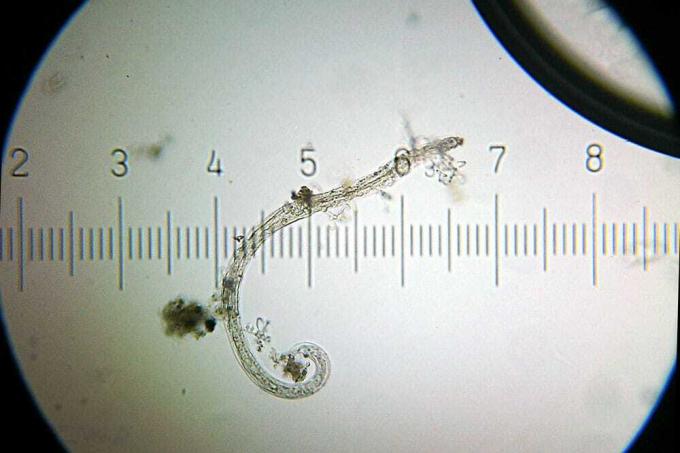
- look for a suitable nematode species
- Determine the extent of the ants plague in order to order enough beneficial insects
- Can only be used in summer
- If storage is required until use, temperatures of 4 ° C to 8 ° C are recommended
- Once dissolved in water, storage is no longer possible
- if the temperature is too cold (especially soil temperature), the nematodes die
- Nematodes are sensitive to UV light
- therefore only sprinkle over the nest early in the morning or late in the evening (if used on the terrace)
- Pour dry soil beforehand (also applies to use in the garden)
Once the nematodes have eaten all of the brood, they too die shortly afterwards and leave no damage or residue at the place of use. Incidentally, beneficial insects do not pose any danger to humans or animals. Therefore, they are a much better alternative than ant bait for fighting flying ants.
Tip: Many home remedies require multiple applications. But even the repeated application of odorous substances or other substances does not promise the desired success one hundred percent. In order to combat flying ants, it is therefore advisable to combine several measures.
Unsuitable home remedies
Of course, the affected person wants to get rid of the ant population as soon as possible. However, there are some remedies that can effectively control the insects but cause them to die a slow, agonizing death. This includes:
- Deer horn salt
- baking powder
- and baking soda
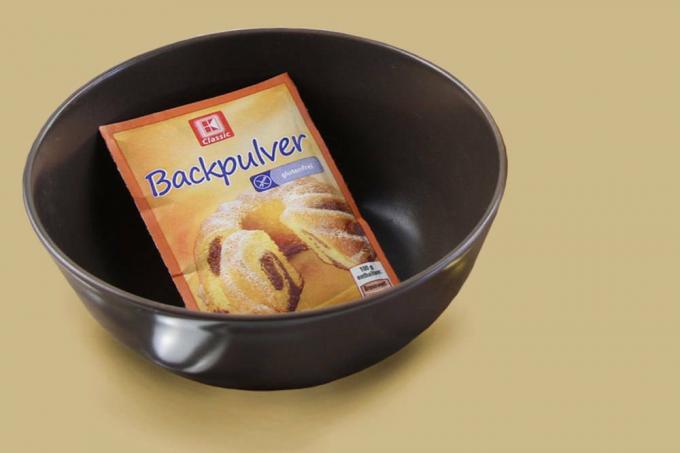
If the ants eat the powder, their bodies swell internally until they finally burst.
Pouring boiling water over them is also a way of wiping out a population in no time. But no matter how annoying the flying ants may be in your own four walls, from a different perspective considered it is actually beneficial insects that make an important contribution to a functioning The ecosystem. There are plenty of other ways to drive the animals away without causing them such pain. Furthermore, methods are known which are extremely environmentally friendly and animal-friendly, but whose efficiency is doubtful. This is how it should help, for example:
- to draw a line of chalk in front of the door
- to disrupt the course of an ant route with eggshells
- Spreading copper coins on the floor
Experience has shown that these measures can only irritate the animals for a short time, if at all. If you still want to try it, you can of course try it anyway.
Prevention as the best defense measure
Even in summer it is advisable to keep doors and windows largely closed. This is especially true for the patio door. Of course, it is impossible to do without regular ventilation. In this case, a fine-mesh fly screen will help prevent the insects from entering. Insects not only use obvious openings to get into the house, they also crawl through small cracks in the walls. If you seal these with silicone, you prevent a population in the apartment. Ants are constantly on the lookout for food and prefer sweet foods. Fresh fruit, like cakes or sticky spreads, belongs in the refrigerator or in a well-closed kitchen cupboard. It is also advisable to change the garbage more frequently in summer.
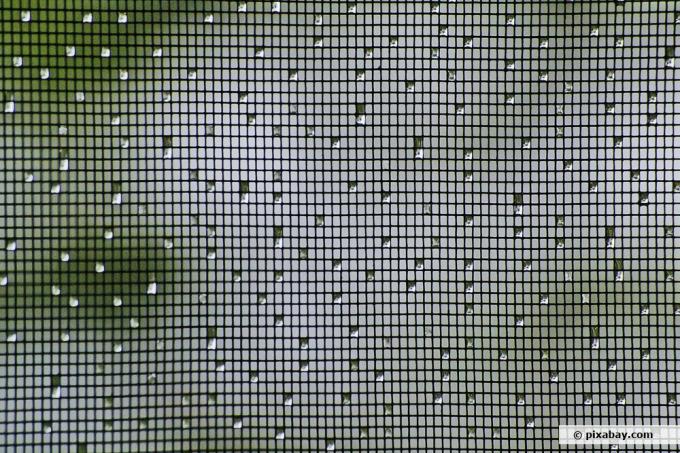
frequently asked Questions
No, there is no danger from flying ants. They are neither poisonous nor do they damage plants. Nevertheless, their appearance tears on the nerves. However, danger threatens if it is not the usual native species. These include, for example, the pharaoh ant, the lawn ant and the black and gray garden ant. Depending on the type, they contaminate food or eat their way into the wood of the interior. if identified, an exterminator must be contacted immediately.
If you have ants in your garden anyway, you have to expect flying animals all summer long. As soon as they are sexually mature, they grow wings and start looking for a partner. From late May to August, they fly through the air to find a potential partner. Flying ants are not a separate species. The behavior is typical for all species.
Here, too, the ants are looking for food. Aphids may have settled on the leaves of the houseplant. After sucking the juice out of the leaves, they excrete a sticky film called honeydew. This attracts ants who love to feast on it. Aphids and ants are known to live in symbiosis.



